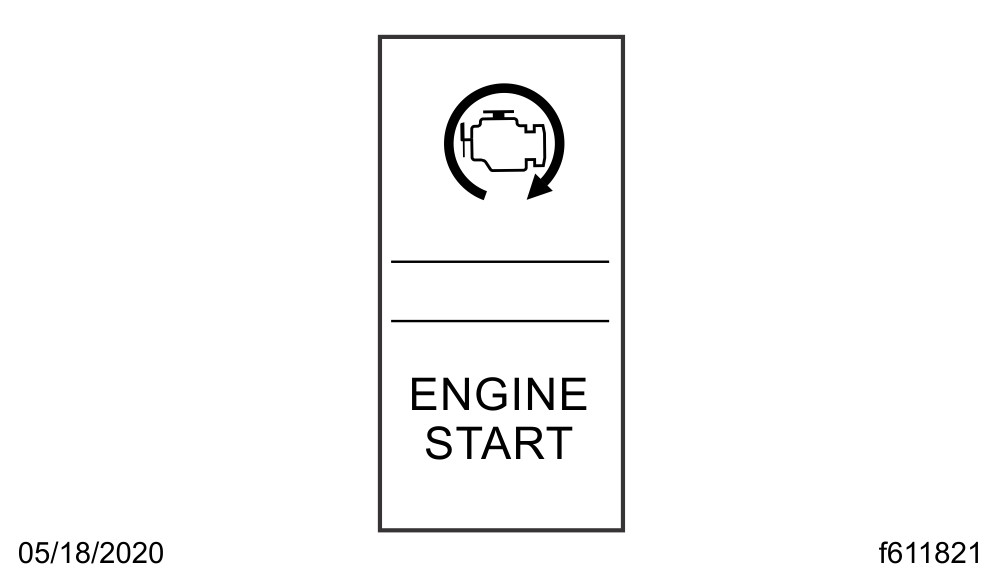Engine Starting
This engine chapter is to serve as a guide for best practices only. Each engine model may have operating characteristics that are unique to that particular engine, and will be documented in the engine manufacturer's literature. Always see specific instructions and recommendations from the engine manufacturer.
Note: Before starting the engine, see General Description, Instruments and Ignition Switch and Key , see Ignition Switch and Key. Read the engine manufacturer's operating instructions before starting the engine.
Warning: Never pour fuel or other flammable liquid into the air inlet opening in the air intake in an attempt to start the vehicle. This could result in a flash fire causing serious personal injury or property damage.
Important: Freightliner vehicles are equipped with starter interlocks to enhance reliability and safety. Anti-grinding, starter pinion, and thermal protection logic limit the amount of time and conditions for starter engagement. Cranking may be limited from 5 to 15 seconds, with a 30-second cool-down period, as determined by the protection logic. If the engine is turning, the starter will not engage. Depending on the transmission option, the starter will not engage if the clutch is not fully depressed, or if the transmission is not in neutral.
Important: The starter can not be used for priming the fuel system. If the fuel/water separator filter is replaced, and the fuel system needs to be primed, see the engine manufacturer's operating instructions.
- Before engine start-up, complete the pre- and post-trip inspections and maintenance procedures, see Safety Precautions.
- Set the parking brake.
- Place the transmission in neutral. On vehicles with manual transmissions, fully depress the clutch pedal.
- Turn the ignition switch to the ON position and allow the self-check to complete.
- Once the start-up sequence has completed, turn the ignition key to the START position. Release the key the moment the engine starts.
- It is not necessary to idle the engine before engaging or starting the operation, but load should be applied gradually during the warm-up period until the oil temperature reaches 140°F (60°C).
- Apply load gradually during the warm-up period.
- Check the oil pressure gauge for any drop in lubricating oil pressure or mechanical malfunction in the lubricating oil system. Minimum oil pressure at idle is 7 psi (50 kPa).
Note: Depending on local jurisdictional emissions regulations, vehicles and/or engines that are domiciled outside of the U.S. and Canada may not be equipped with the 'STARTER BLOCKED' function.
Note: The driver display screen may present 'STARTER BLOCKED' message if the start-up sequence is not completed, the transmission is in gear, or the starter has overheated.
Notice: Do not rev the engine if the oil pressure gauge indicates no oil pressure. Shut down the engine if oil pressure does not build within approximately ten seconds. Check to determine the cause of the problem. Operating the engine with no oil pressure will damage the engine.
Notice: If the oil pressure gauge indicates no oil pressure, shut down the engine within approximately ten seconds to avoid engine damage.
